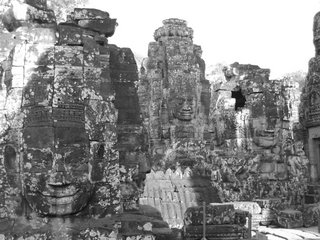Clean, Clear, Calm…
A couple of years back, a friend of mine asked me to "help" him run the NYC marathon. He hadn’t trained, and his plan was to enlist 5 friends to each run 5 miles with him and support him through the race. I agreed to do my part and showed up at mile 5 in Brooklyn at the appointed time. As he neared, I jumped into the sea of humanity and found a pace chugging alongside him. Despite the chill of November in New York, I quickly began to sweat out the bottle of wine and huge dinner I had the night before. I was having a blast, though – the sights, the sounds, the supporting crowds… it was incredible to be a part of that swell of energy. As we approached mile 10, though, it became clear that the appointed friend was not as punctual as I had been. Feeling good, I decided to stick with my buddy and fill the gap. I had never run 10 miles before, but what the heck. We trudged along to mile 15, where yet another recruited runner had not shown up. Breaking new ground, I agreed to keep o...

Comments
Post a Comment